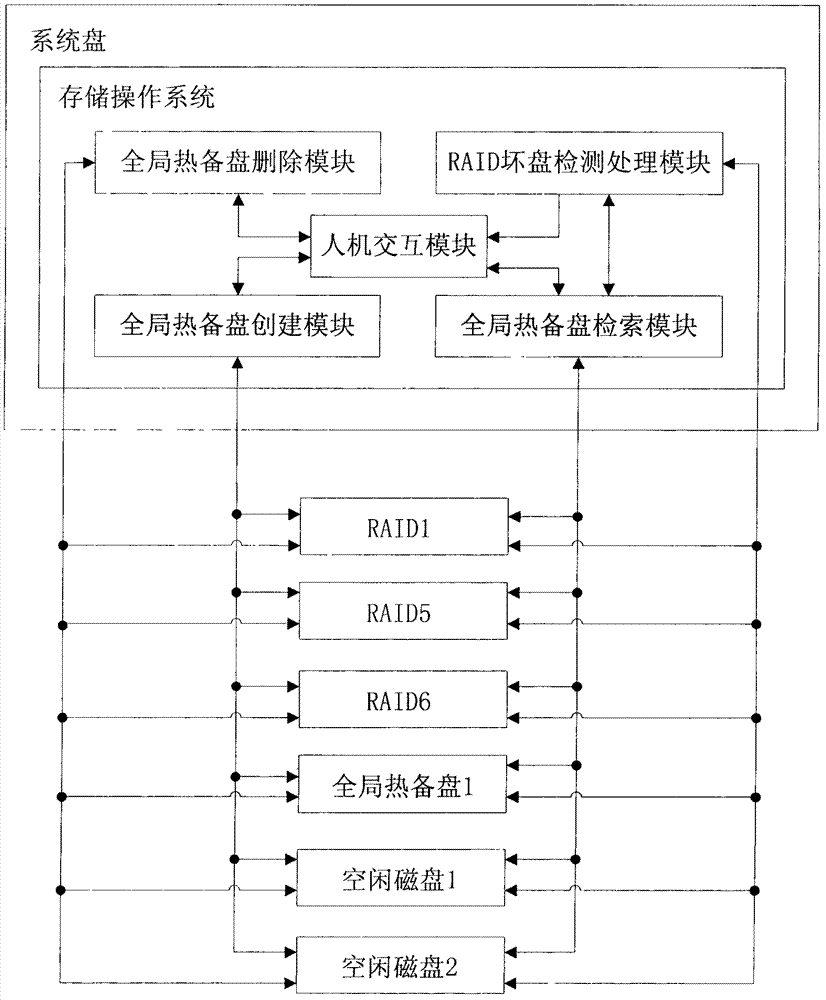Disk array system supporting grouping-free overall situation hot standby disks based on flexible redundant array of independent disks (RAID)
A disk array and hot spare disk technology, applied in the field of computer data storage, can solve the problems of low application reliability of global hot spare disk, inability to realize global hot spare disk sharing, unfavorable data migration, etc., and achieve the effect of facilitating data migration
- Summary
- Abstract
- Description
- Claims
- Application Information
AI Technical Summary
Problems solved by technology
Method used
Image
Examples
Embodiment Construction
[0046] The present invention will be described in further detail below in conjunction with the accompanying drawings and specific embodiments.
[0047] A kind of disk array system based on soft RAID of the present invention to support non-grouping global hot spare disk, its structure is as follows figure 1 As shown in the figure, it includes: RAID1, RAID5, and RAID6, 1 each, 2 idle disks, 1 global hot spare disk, system disk, and storage operating system.
[0048] Described RAID1, RAID5, RAID6 are in Linux operating system, use "-C" or "-create" parameter of the mdadm software of version 3.1.2 to finish creating, and are managed by mdadm; The super block of described RAID member is In the 4KB space starting from 0x1000 of its storage space, the super block structure instance is stored in the super block, and the first member of the super block structure instance is a data with fixed length and content, which is called the RAID member flag. In this example, the RAID member fla...
PUM
 Login to View More
Login to View More Abstract
Description
Claims
Application Information
 Login to View More
Login to View More - R&D
- Intellectual Property
- Life Sciences
- Materials
- Tech Scout
- Unparalleled Data Quality
- Higher Quality Content
- 60% Fewer Hallucinations
Browse by: Latest US Patents, China's latest patents, Technical Efficacy Thesaurus, Application Domain, Technology Topic, Popular Technical Reports.
© 2025 PatSnap. All rights reserved.Legal|Privacy policy|Modern Slavery Act Transparency Statement|Sitemap|About US| Contact US: help@patsnap.com

